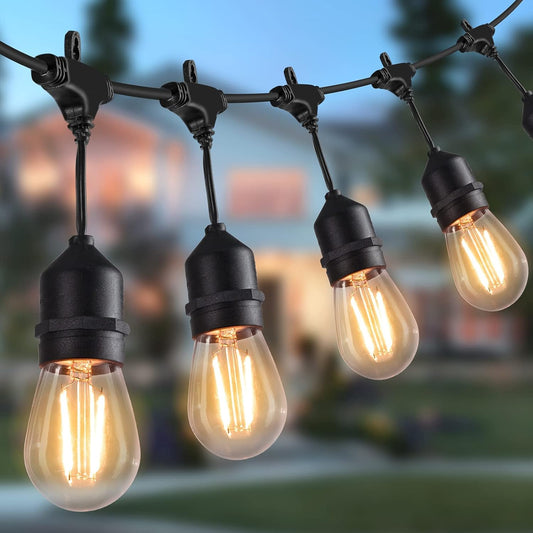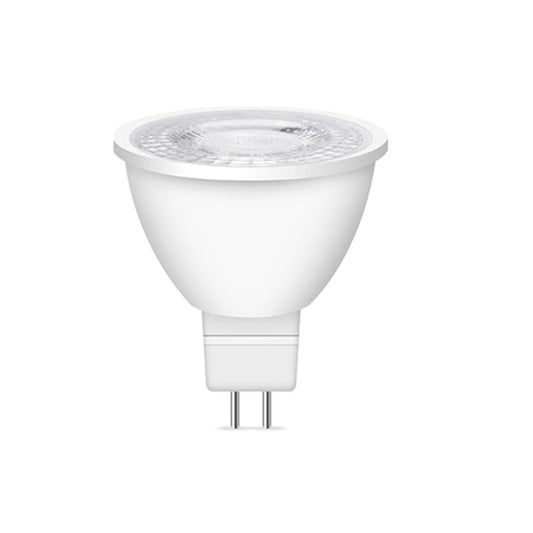
Wired VS Wire Free Lighting Which LED Lights Are Best
Wire-Free Installation
Advantages:
Ease and Speed: Wire-free installation is one of the most significant advantages of using this type of light strip. The process typically involves removing the adhesive backing from the strip, sticking it to a clean surface, and then plugging it into a power source. This simplicity eliminates the need for complex wiring or electrical knowledge, making it accessible to virtually anyone. Whether you’re installing these lights in your home, office, or for a special event, the quick setup means you can achieve the desired lighting effect in a fraction of the time compared to traditional wired installations. This ease of installation also means that wire-free strips are perfect for last-minute projects or temporary installations, such as holiday decorations, where time is of the essence.
High Flexibility:The flexibility of wire-free light strips extends beyond their installation. Because they are not tethered to a fixed wiring system, you can easily reposition or relocate them as needed. This makes them ideal for spaces where the lighting needs might change frequently, such as in rental properties, exhibition booths, or dynamic retail displays. For instance, if you’re setting up a gallery exhibition or a pop-up store, you can adjust the lighting to highlight different products or artworks without worrying about rewiring. This ability to adapt the lighting setup without needing to alter the existing infrastructure is a significant advantage, particularly in environments that require frequent updates or changes.
Neat and Aesthetic:Aesthetically, wire-free light strips offer a cleaner, more streamlined appearance. Without the need for visible wiring, they contribute to a minimalist and clutter-free environment, which is particularly appealing in modern interior designs. This is especially important in small or highly visible spaces, such as under kitchen cabinets, along staircases, or around mirrors, where traditional wiring could be an eyesore. The lack of exposed wires also reduces the potential for tangling or damage, further enhancing the neatness of the installation. This clean look is not only visually pleasing but also contributes to the overall safety of the space by reducing trip hazards.
Low Cost:Wire-free light strips tend to be more cost-effective overall. Since they do not require the additional expense of wiring materials, conduits, or professional installation services, the initial setup cost is generally lower. This is particularly advantageous for smaller projects or those on a tight budget. Additionally, because the installation is simpler and quicker, there are savings in labor costs as well. For DIY enthusiasts, the ability to install the lights themselves without hiring an electrician can significantly reduce the total cost of the project. Over time, the savings from not needing to alter the existing electrical infrastructure or hire professionals can make wire-free solutions an attractive option for both residential and commercial applications.
Disadvantages:
Power Limitations:One of the main drawbacks of wire-free light strips is their reliance on nearby power outlets or batteries, which can limit their placement. If the power outlet is not conveniently located, you may need to use extension cords, which can detract from the neat appearance and pose additional safety risks. Battery-powered strips, while offering more placement flexibility, come with their own set of limitations. Batteries need to be replaced or recharged regularly, and the power output from batteries is typically lower than that from a direct electrical connection. This means that battery-powered strips might not be suitable for applications where consistent or long-term illumination is required. The need to frequently replace batteries can also add to the maintenance burden and overall cost in the long run.
Power and Brightness Limitations:Due to their reliance on limited power sources, wire-free light strips may not be as powerful or bright as their wired counterparts. This can be a significant limitation in environments that require high-intensity lighting or in large spaces where the light needs to cover a broader area. For instance, in a commercial setting such as a retail store or a restaurant, where bright, consistent lighting is crucial for ambiance and visibility, wire-free strips might not deliver the necessary output. Additionally, because these strips are often designed with energy efficiency in mind to prolong battery life, they may be less bright than wired options, making them less suitable for tasks that require strong illumination, such as reading or detailed work.
Stability and Lifespan:Battery-powered wire-free light strips can also suffer from reduced stability over time. As the battery power diminishes, the brightness of the lights often decreases, leading to inconsistent lighting. This can be particularly problematic in areas where reliable lighting is essential, such as in safety-critical locations or high-traffic areas. Furthermore, the need for frequent battery replacements can be inconvenient and may result in downtime if the batteries are not replaced promptly. The cumulative cost of replacing batteries or recharging them regularly can also add up over time, making wire-free light strips less economical for long-term or intensive use compared to wired solutions.
Wired Installation
Advantages:
Stable Power Supply:The primary advantage of wired light strips is their direct connection to a continuous power source, which ensures consistent and reliable operation. Unlike battery-powered options, wired strips do not suffer from diminishing brightness over time, providing a steady output that is crucial in environments where consistent lighting is necessary, such as in kitchens, offices, or commercial settings. The ability to run these lights continuously without the need to monitor or replace batteries makes them ideal for areas where lighting is needed for extended periods. For example, in a commercial warehouse, where lighting is required throughout the day and night, wired light strips offer a reliable solution that can operate seamlessly without interruption.
High Power Support:
Wired light strips can typically handle higher power loads, allowing them to produce brighter light and cover larger areas. This makes them suitable for a wide range of applications, from residential to industrial settings. For instance, in a large retail environment or an exhibition hall, where high visibility is crucial, wired strips can be configured to deliver the necessary brightness across a vast space. The ability to connect multiple strips in a series or use more powerful LEDs without worrying about power constraints also provides greater flexibility in designing complex lighting systems. In outdoor installations, where bright and durable lighting is needed to withstand harsh conditions, wired strips offer the robustness and reliability that battery-powered options may lack.
Professional and Customizable:
Wired installations, typically performed by professionals, offer a higher degree of customization and sophistication. Electricians can create tailored lighting solutions that integrate seamlessly with existing electrical systems, ensuring optimal performance and safety. This is particularly beneficial in complex environments, such as smart homes or commercial buildings, where lighting systems need to be integrated with other automated controls, such as dimmers, timers, or motion sensors. For example, in a smart home setup, wired light strips can be programmed to work in harmony with other devices, creating a cohesive and user-friendly environment. The ability to hide wiring within walls or ceilings during installation also enhances the aesthetic appeal of the space, leaving no visible traces of the electrical infrastructure.
Longer Lifespan:
Wired light strips generally have a longer lifespan compared to battery-powered alternatives. The consistent power supply not only ensures stable performance but also reduces the wear and tear on the light strips themselves, extending their overall longevity. This durability is particularly important in commercial or industrial settings where the cost of frequent replacements could be prohibitive. For instance, in a manufacturing facility where lighting is critical for operations, having a dependable and long-lasting solution reduces downtime and maintenance costs. The use of higher-quality components in wired installations further enhances their durability, making them a more cost-effective choice over the long term for both residential and commercial applications.
Disadvantages:
Complex Installation:One of the significant drawbacks of wired light strips is the complexity of their installation. Unlike wire-free options, which can be installed in minutes, wired strips require running electrical wires, installing junction boxes, and sometimes even modifying existing electrical systems. This often necessitates hiring a professional electrician, which increases the cost and time required for the installation. Additionally, in some cases, walls or ceilings may need to be opened to hide the wiring, which can be disruptive and requires additional work to repair and restore the affected areas afterward. This complexity can be a deterrent for those looking for a quick or temporary lighting solution and is better suited to permanent installations where the investment in time and money is justified.
Lower Flexibility:Once installed, wired light strips are relatively fixed in place, making them less flexible if you need to change your lighting setup. Unlike wire-free strips that can be easily moved or reconfigured, wired strips require significant effort to relocate. This can be a limitation in dynamic environments, such as retail spaces that regularly update their displays, or in homes where the decor and layout change frequently. If you decide to remodel a room or move the lighting to a different location, you may need to undertake another round of installation work, potentially involving additional costs and disruption. This inflexibility makes wired strips less suitable for spaces where versatility and adaptability are key considerations.
Higher Cost:The cost of wired installations is typically higher than that of wire-free options, both in terms of materials and labor. Beyond the cost of the light strips themselves, you need to factor in the expenses for wiring, electrical components, and professional installation services. This makes wired light strips a more substantial investment, particularly for large-scale projects or complex installations. For instance, in a commercial setting where hundreds of feet of lighting may be needed, the cumulative cost of materials and labor can be significant. Additionally, any changes to the wiring after the initial installation—such as adding more lights or modifying the layout—can incur further costs, making wired solutions more expensive to maintain and update over time.
Conclusion
In summary, the choice between wire-free and wired light strips depends largely on the specific needs of the project and the environment in which they will be used.
Recommend several stable and hot-selling products:Outdoor IP65 String Lights For Christmas






